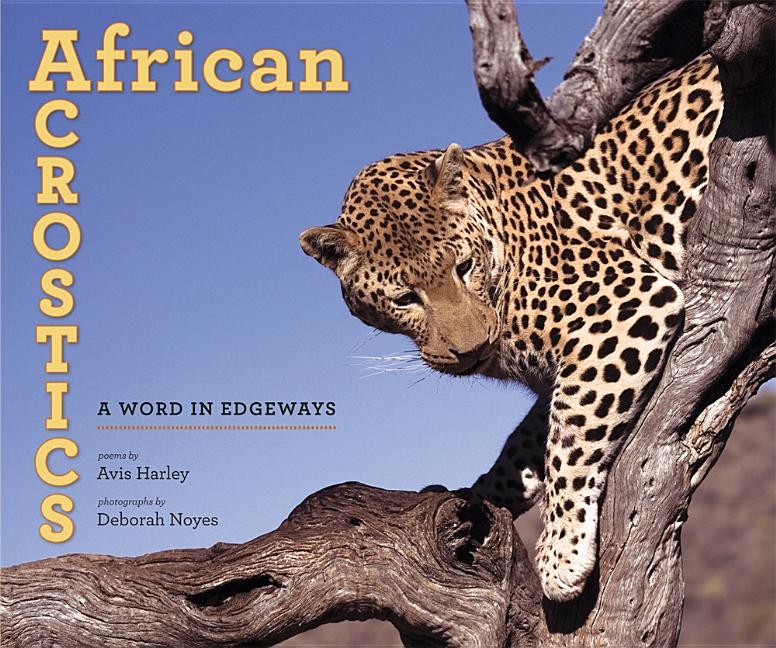Book Descriptions
for African Acrostics by Avis Harley and Deborah Noyes
From Cooperative Children's Book Center (CCBC)
Animal lovers, poetry appreciators, and puzzle fiends will all find something to love in this collection of poems about birds and animals of the African savanna. Most of Avis Harley’s clever descriptive poems are traditional acrostics, in which the first letter of each line spells out a word relating to the poem’s subject. But some are more devious: There are double acrostics, which feature words spelled from both the beginning and end letters in each line; multiple acrostics—one poem has five embedded vertical words; and other variations on the acrostic form. Accompanying each poem is a full-page photograph of the animal subject. Photographer Deborah Noyes took most of the photos in Namibia, and she includes a note about that experience. Brief additional notes about each of the animals, and a more lengthy explanation of the acrostic form, round out this unusual volume. (Ages 7–10)
CCBC Choices 2010. © Cooperative Children's Book Center, Univ. of Wisconsin - Madison, 2010. Used with permission.
From the Publisher
Look carefully! The wild animals of Africa spring to life in clever, lighthearted poems and compelling, evocative photographs.
Inside every acrostic is a secret message, often lurking in the first letter of each line (read top to bottom). But look out! These acrostics not only follow their subjects to Africa, but they also take the form to a whole new level. Here you’ll find the elusive double acrostic (in which the first and last letters of each line spell a message), the cross acrostic (in which the message is read diagonally), and the multiple acrostic (see it to believe it) — not to mention lions, zebras, crocodiles, hippos, leopards, and elephants. Oh, my! Illustrated with gorgeous full-color photographs, this collection is sure to send poetry buffs and animal lovers on an armchair safari they’ll never forget.
Inside every acrostic is a secret message, often lurking in the first letter of each line (read top to bottom). But look out! These acrostics not only follow their subjects to Africa, but they also take the form to a whole new level. Here you’ll find the elusive double acrostic (in which the first and last letters of each line spell a message), the cross acrostic (in which the message is read diagonally), and the multiple acrostic (see it to believe it) — not to mention lions, zebras, crocodiles, hippos, leopards, and elephants. Oh, my! Illustrated with gorgeous full-color photographs, this collection is sure to send poetry buffs and animal lovers on an armchair safari they’ll never forget.
Publisher description retrieved from Google Books.


